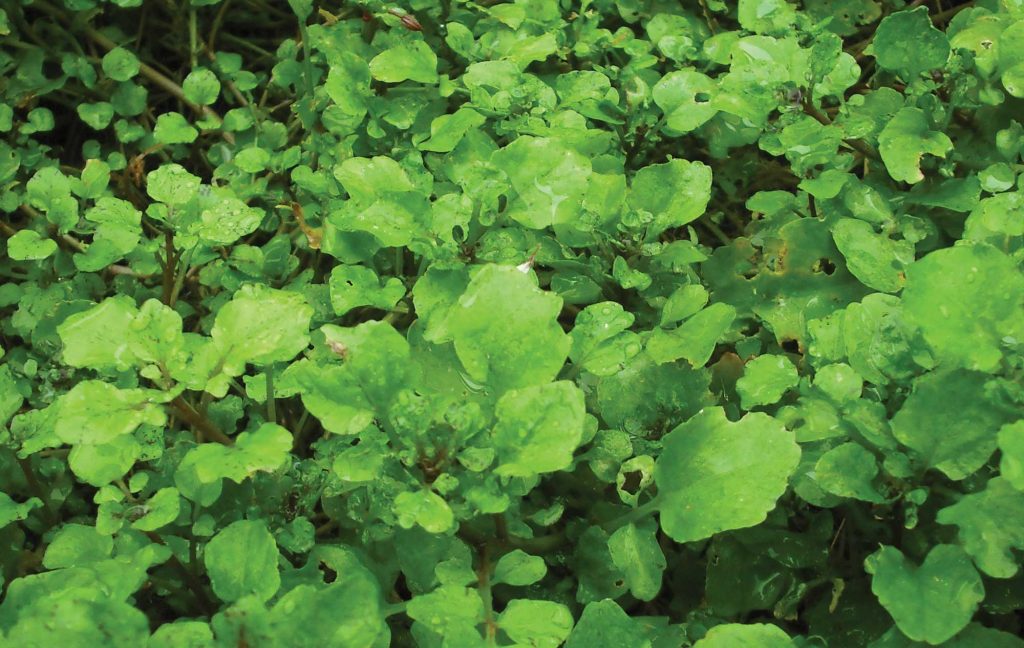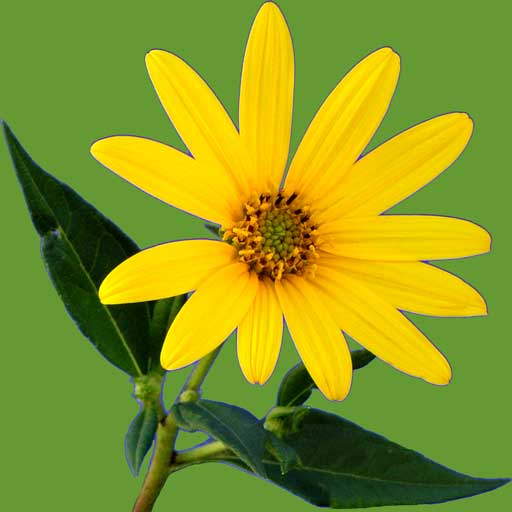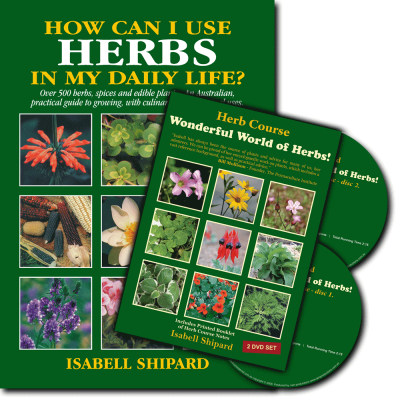Scurvy Grass
Nasturtium officinale syn. Rorippa nasturtium-aquaticum, Radicula nasturtium aquaticum F. Brassicaceae
Description
Hardy perennial, native to Europe, and now naturalised in every continent, as settlers took with them this valuable food plant. Creeping, hollow, fleshy, square stems to 30-50cm with many side stems of lush-green, oblong-ovate leaves. Very small, white flowers with four-petalled corollas resembling a Greek cross, which is a characteristic of plants in the Brassicaceae family (syn. Cruciferae family, the name coming from Latin meaning to bear a cross, because of the cross-like resemblance of the flower).

Not only do the ‘cross-like’ flowers remind us of the family that it belongs to; but also thoughout history this family was recognised for its ability ‘to serve man’ with valuable health and healing properties. Important staple food plants that we are familiar with in this family include: broccoli, brussels sprouts, cabbage, turnip, mustard, horseradish, nasturtium and radish. It is said there are no poisonous plants in this family.
… … omitted text, please see How can I use HERBS in my daily life? for full text.
Constituents:
volatile oil, glycosides, fibre, protein with animo acids arginine, histidine, isoleucine, leucine, lysine, threonine, phenylalinine, methionine, tryptophan, valine, folic acid, courmarins
Vitamins:
A , B1, B2, B3, B5, B6, B17, C, D, E, K
Minerals:
calcium, phosphorus, potassium, iron, sodium, magnesium, copper, manganese, florine, sulphur, chlorine, iodine, germanium, silica, zinc
Actions:
antibiotic, antibacterial, diuretic, expectorant, stimulant, digestive, stomachic, antiscorbutic, antiseptic, antioxidant, tonic
Medicinal Uses
Since early times, the herb has had many uses. Pliny, who lived from 23-79AD listed over 40 medicinal uses for watercress, and included the belief that the smell of watercress would drive away snakes and neutralize scorpion venom! A Persian tradition was to feed it to their children to increase strength and stature. African tribes believed watercress could cause temporary sterility, but note, they also regarded it as an aphrodisiac!
Watercress was renown in herbal history as a spring-cleaning herb for purifying the blood and toning the whole system. Many of the great herbalists wrote of the revitalising powers of watercress. Early Romans revered the health benefits of watercress, while the Greeks believed it was valuable brain food and strengthened the nervous system. Persian King Xerxes fed watercress to his soldiers, to keep up strength and stamina.
Therapeutic uses have included: coughs, head colds, bronchial ailments, tuberculosis, asthma, emphysema, stress, pain, arthritis, stiff back and joints, diabetes, anemia, constipation, cataracts, failing eye sight, night blindness, leukemia, cancer, hemorrhaging, heart conditions, eczema, scabies, body deodorizer, edema, bleeding gums, weight loss, indigestion, alcoholism, intestinal parasites, circulation, sluggish menstruation, lack of energy, kidney and gall stones, as a brain and nerve strengthener; ailments of the spleen, thyroid, and liver; to normalize cholesterol and blood pressure; for improved memory, for mental function decline and to retard ageing; for failing or scant milk supply of nursing mothers; to regulate flow of bile, health of glands and the functions of body metabolism. It is one of the best sources of the element iodine, other than seaweed, such as kelp. Iodine is important to the function of the thyroid gland. The leaves used as a poultice are applied for relief from enlarged prostate gland.
The chlorophyll-rich leaves are chewed to absorb breath odours. Dr. Robert Willner in ‘The Cancer Solution’ states that chlorophyll is an effective anti-cancer substance, with antioxidant action, helping to neutralize free radicals from chemicals, pesticides, cigarette smoke, diesel emissions and many other environmental mutagens. Chlorophyll is rich in digestive enzymes. These enzymes make it easier to digest heavy foods we eat, such as starches and protein. Also, it is said that the enzymes act as a catalyst, so that the food is more fully utilized and the body gets better benefit from the vitamins and mineral content, and for this reason eating sprigs of watercress with our meals, is most beneficial. But note, to get the benefit of the enzyme action the leaves need to be eaten fresh, as the heat of cooking destroys enzymes.
Watercress contains more sulphur than any other vegetable, except horseradish. Sulphur rich foods play an important part in protein absorption, blood purifying, cell building and in healthy hair and skin.
The potassium content of watercress is valued for weight loss, as its diuretic action draws excess fluid down and out of the body. Dieters will benefit with eating high potassium foods and eliminating or cutting back on high sodium foods, including salt. The rich calcium content of watercress has been encouraged for soft teeth and weak bone conditions. Chew watercress for bleeding gums. A cough medicine, utilized finely chopped leaves steeped in honey overnight. Watercress juice was mixed with vinegar and consumed for lethargy and drowsiness. A folk-remedy for allergies, watering eyes, sneezing and stuffy head, said these conditions could be cleared by regularly eating several handfuls of watercress. The saying ‘to eat cress’, was sometimes directed at people whose wits were believed to have deserted them! To relieve headaches, make an infusion with a handful of chopped watercress leaves and 2 cups of boiling water. Cool. Strain. Soak a Chux, soft cloth or washer in the infusion and rest with it placed over the forehead. In the Middle Ages, the Salernitan School of medicine recommended rubbing the juice of watercress into the scalp to strengthen and thicken the hair. A tonic for promoting hair growth, utilized 100g watercress (finely chopped) and placed in a glass jar, covered with 100ml of alcohol (vodka or brandy) and 1 teasp. of geranium oil. This mixture was shaken several times daily for 2 weeks; then strained and bottled. A little of the tonic was rubbed into the scalp daily.
Use watercress as a poultice for swollen feet and sprained ankles. Watercress is valued for clearing and improving the complexion, by eating and applying externally as a lotion. Fresh juice was applied to the face and skin to fade freckles, spots and blotches, and to clear acne, blemishes, pimples, and blackheads. The juice was applied at night, and washed off in the morning. For a beauty skin lotion, mix 1 tablesp. of honey with 4 tablesp. of watercress juice. Bottle and keep in refrigerator. With cotton wool, dab the lotion on the skin morning and evening, taking care to avoid the eyes. Betty Kamen Ph.D. in her book, ‘Germanium, a new approach to immunity’ shares research on the benefits of plants that contain the mineral germanium. Watercress is a source of the germanium. Germanium acts as an antiviral, antibiotic, and body detoxifier; an oxygen carrier and catalyst; strengthening bone-mass, the immune system and biologically stimulating electrical impulses at cell level. Germanium also plays a role as an adaptogen, helping the body to help itself work to alleviate minor or major health imbalances or to keep the body free of problems, acting both as therapeutic and preventative.
Several herbal writers say that watercress should be eaten in moderation, warning that too much over too long a period of time may cause cystitis or other bladder problems due to its strong diuretic properties. While another writer, indicates eating 2 handfuls a day is most beneficial, and another writer says to use watercress unstintingly and be lavish with it in salads. I like to eat watercress regularly. Terri Teague and Mildred Jackson in ‘The Handbook of Alternatives to Chemical Medication’ list watercress as, ‘A wondrous source of nutrients for the body and to help clear cancerous growths’. The Sunday Mail April 1997 reported how watercress can block cancer; ‘Scientists have found that the salad vegetable watercress contains a chemical, which helps prevent lung cancer’. Researchers said that a daily intake of watercress turned one of the four major cancer-causing agents in tobacco smoke, into human waste. It is the first time a vegetable has been found to have a beneficial effect on a lung carcinogen in humans. Scientists were working, to condense the key anticancer ingredient in watercress, into a pill. Monash Medical Centre’s leading research nutritionist, reported watercress was one of a number of foods, including green tea and soy products, which could interrupt one of the key pathways of developing lung, breast and bowel cancer. When I contacted the University recently and one of the researchers, I found that nothing further appears to have been done. Why is it that we do not hear more about such research discoveries? Is it, that vested interests do not want us to know the facts? Read the book, ‘World without cancer, the story of vitamin B17’ by Edward Griffin, which reveals, how science has been subverted to protect entrenched commercial and political interests. The book explores the revolutionary concept that cancer is a deficiency disease, the substance missing being B17 (also called laetrile), discovered by German chemist Leibig in1830, and further researched by Dr. Ernst Krebs and others. Their research found vitamin B17 stimulated the hemoglobin (red blood cells), strengthened the immune system, acted as a pain reliever for terminal cancer sufferers and other diseases by releasing benzoic acid, which has a natural analgesic effect. It was found that organic cyanide and benzaldehyde released from the laetrile molecule by an enzyme action, could destroy cancer cells, and leave healthy cells undamaged. Dr. F. Krebs made the point that laetrile was not cyanide poisoning, by injecting himself with a syringe filled with pure laetrile, without suffering any ill effects. A therapeutic dose is listed at 250-1000mg daily, with a toxic dose level of 3,000mg.
Then why was B17 banned by the Government? In 1974 when Griffin’s book was published, he said that the drug aspirin creates toxicity in the body and is accumulative. Researchers say laetrile is less toxic than sugar, and that aspirin is 20 times more toxic than the equivalent amount of laetrile. In the United States over 90 people die from aspirin poisoning annually. The B17 molecule contains 2 units of glucose (sugar) one of benzaldehyde, and one of cyanide all tightly locked together within it, and in its natural state it is completely inert chemically. Its action in the body, is completely utilized in a few hours, leaving behind absolutely no build-up. Aspirin is a drug, alien to nature and the body, whereas B17 is a vitamin found in some plants that are used for human consumption. This is where watercress comes in, as it has approximately 98mg of vitamin B17 per 100 grams of leaves. Watercress has been included by some people, in the Essiac mixture of herbs (see p 52).
Also, noteworthy is the fact that watercress is a food with alkalinity of 8.1 in metabolic reaction, making it valuable in our daily diet; to counteract an acidic system, caused by overall consumption of too many acid foods, processed foods, stresses and pollutants in the environment. Watercress is a powerful cleanser of the body, especially the bloodstream. It has properties that help dissolve fatigue-causing fibrin, coagulated in the blood vessels.
Culinary Uses
Watercress stimulates digestive juices. The tangy taste and smell of the leaves are indicated in the plant’s generic name Nasturtium which comes from Latin ‘nasi tortium’ meaning nose twitching; no doubt due to the peppery taste, which causes a contraction of nasal and mouth muscles. The term ‘officinale’ refers to the herb, being noted in the ‘official list’ of the most important medicinal herbs, a place most deserving for watercress, as there are few herbs that are richer in the large array of vitamins and minerals, which are essential to the human body. Watercress being a Brassicaceae plant and in the same family as mustard, has the typical pungent flavour due to the chemical compounds known as isosalfocyanic glucosides. When getting to know and appreciate watercress, if this pungent flavour is too strong, chop up the leaves finely, sprinkle over other salad leaves or vegetables, and the peppery flavour will hardly be noticed.
The very best way to get the full nutritional value of watercress is to pick just before a meal and eat. Add to cooked dishes, salads, soup, stews, and stir-fries, just before serving. The English tradition of watercress sandwiches was a favourite at garden parties. Watercress, tomato and cheese are a tasty combination in salads. Try serving sprigs of watercress as a garnish on platters of vegetables, and the leaves also make a good accompaniment with diced paw paw and pineapple. Watercress can be the main ingredient in pesto or in soup. Use the leaves in omelettes, pies, quiche, casseroles, dips, rice dishes and stuffings. Try the following combination, which a friend shared with me: chop some watercress in 1- 2cm lengths, toss through a little lemon juice and a pinch of sugar and serve on bread. A little stevia or Aztec sweet herb could be used instead of sugar.
… … omitted text, please see How can I use HERBS in my daily life? for full text.


